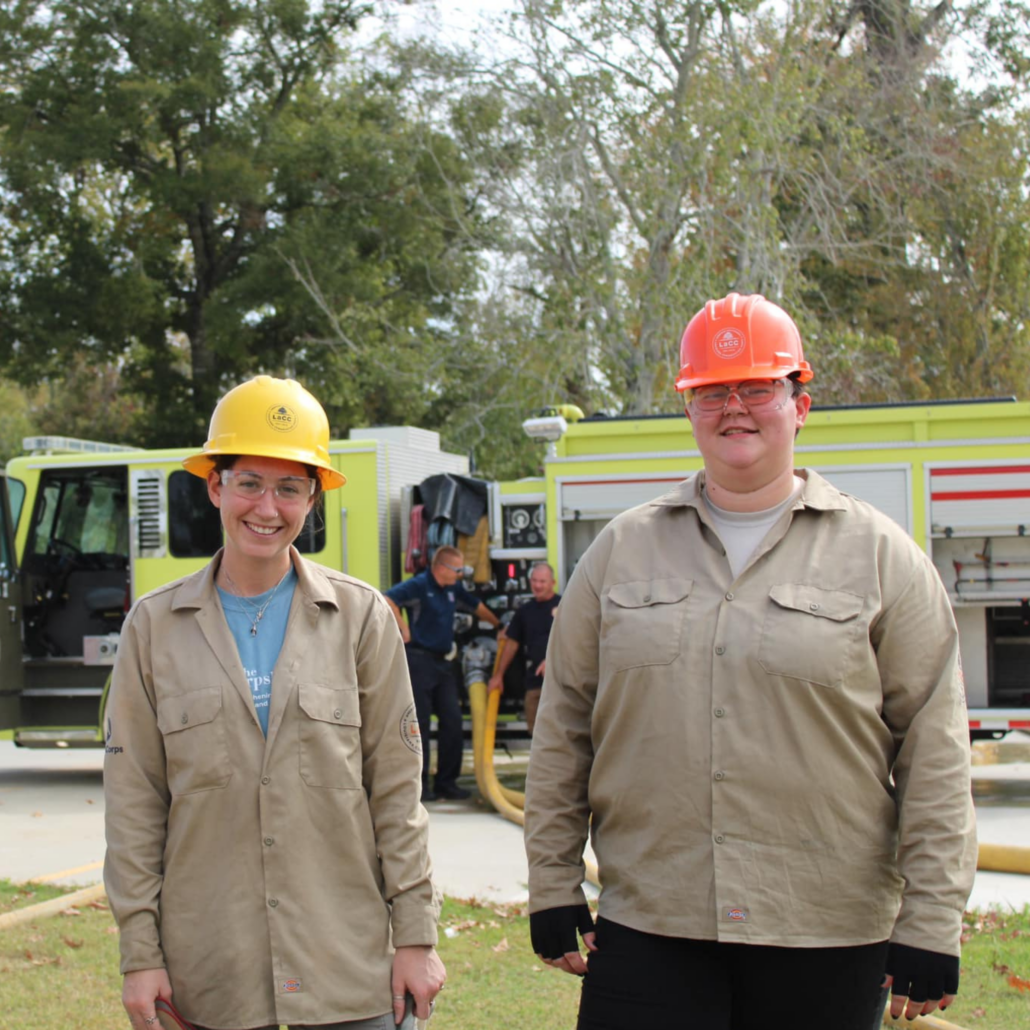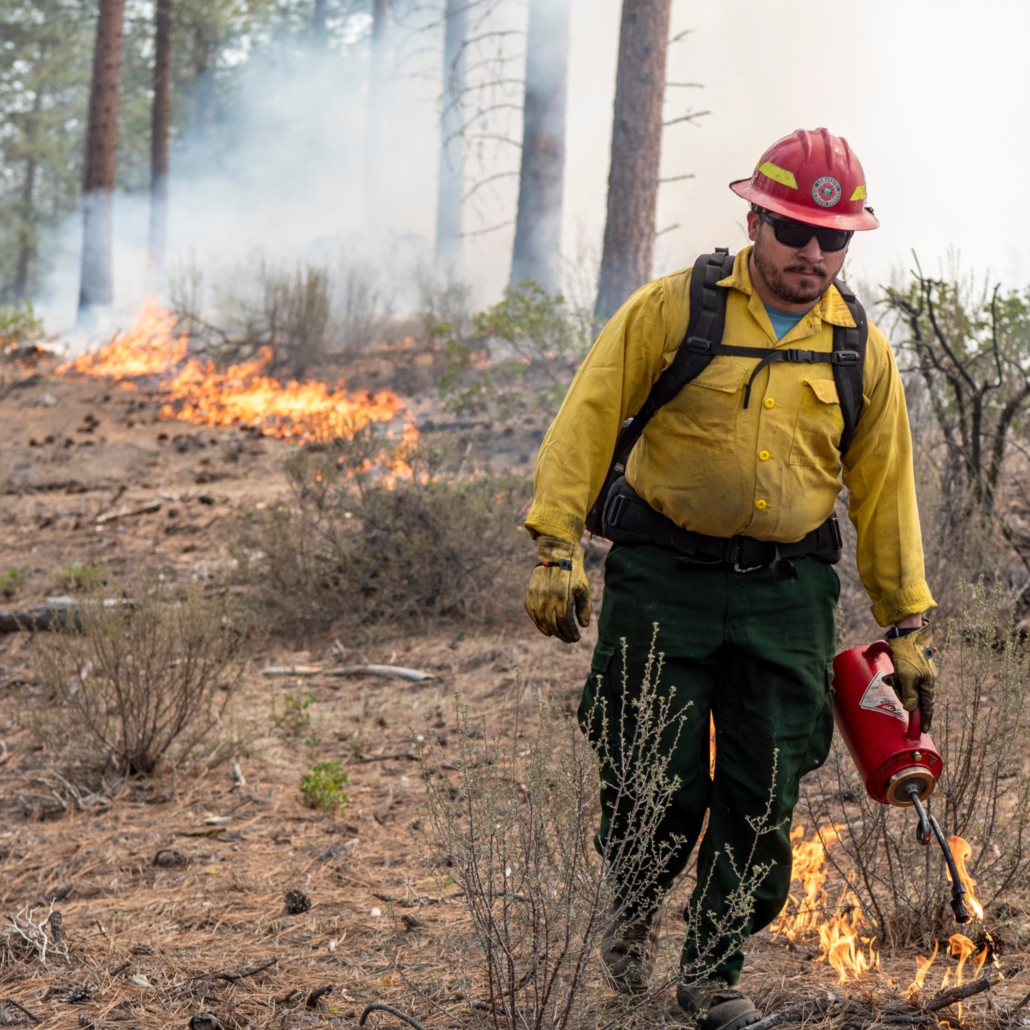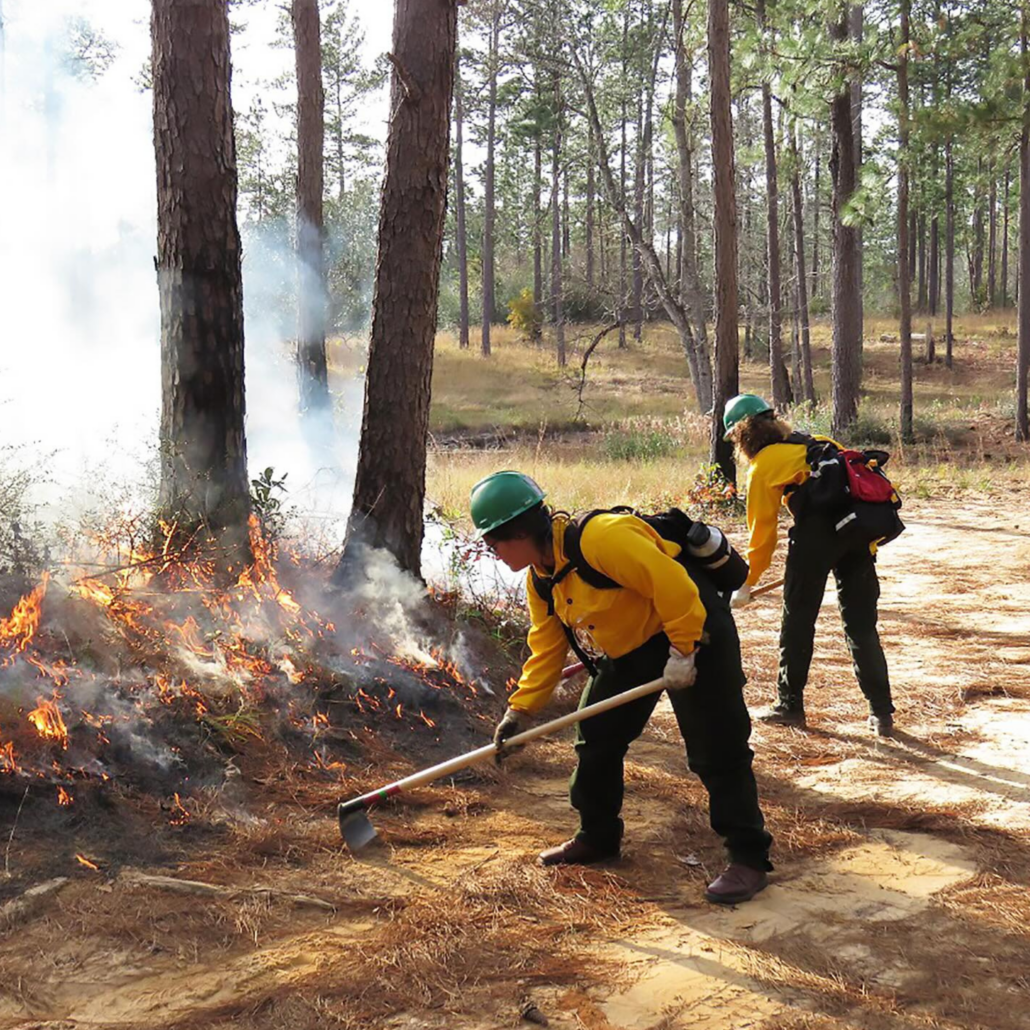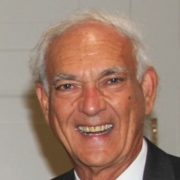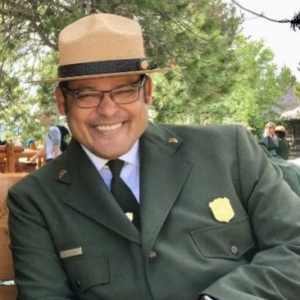Every year, The Corps Network conducts a survey of our 150 member organizations to collect data on the impact Corps have on America’s communities, public lands, and young people. See below or in this fact sheet for a data snapshot on Corps hazardous fuels reduction efforts in 2024.
At-a-Glance: Acres of Hazardous Fuels Reduced
- –
- TOP OVERALL
- TOP SMALL CORPS
- TOP MEDIUM CORPS
- TOP LARGE CORPS
- CORPS
- American YouthWorks
- Lomakatski Restoration Project
- American YouthWorks
- Conservation Corps Minnesota & Iowa
- TOTAL
- 63,726
- 6,000
- 63,726
- 17,143
For the purpose of this snapshot, we define Corps as follows:
- Small Corps: 1-50 Corpsmembers
- Medium Corps: 51-400 Corpsmembers
- Large Corps: 401 and above
Overview
Reducing hazardous fuels is an important part of managing and preventing wildfires. This involves removing or changing the amount of vegetation, dead plants, and other materials that can catch fire. By doing this, we can lower how intense and fast wildfires can spread. Effective fuel reduction protects homes and infrastructure in areas at risk of fire and helps create healthier forests by allowing natural fire patterns to return. These actions make it safer and easier for firefighters to control fires while also minimizing the negative effects wildfires can have on the environment, economy, and communities. As climate change makes fire seasons longer and wildfires more severe in many places, investing in fuel reduction programs is crucial for building resilient communities and protecting our environment.
- CORPS
- American YouthWorks
- Conservation Corps Minnesota & Iowa
- Lomakatsi Restoration Project
- Climb Community Development Corporation
- California Conservation Corps
- Mile High Youth Corps
- Maryland Conservation Corps
- Conservation Corps of the Forgotten & Emerald Coasts
- Heart of Oregon Corps
- The C.R.E.W.
- OUTCOMES
- 63,726
- 17,143
- 6,000
- 2,800
- 2,686
- 1,563
- 984
- 928
- 345
- 250
Top Overall: American YouthWorks
American YouthWorks is a nonprofit organization that provides education, job training, and service opportunities to young adults aged 16-30. American YouthWorks actively participates in these critical fuel reduction efforts, providing Corpsmembers with specialized training in wildfire management techniques while helping protect communities from wildfire risks.
Top Small Corps
- CORPS
- Lomakatsi Restoration Project
- Climb Community Development Corporation
- Maryland Conservation Corps
- The C.R.E.W.
- University of Wyoming, Wyoming Conservation Corps
- OUTCOMES
- 6,000
- 2,800
- 984
- 250
- 45
Top Small Corps: Lomakatsi Restoration Project
Lomakatsi Restoration Project is a non-profit organization that specializes in ecological restoration and workforce development. A prime example of their work is the West Bear All-Lands Restoration Project, which implements strategic forest health and wildfire reduction treatments in a contiguous landscape from Ashland to Medford, west of the I-5 corridor, and across into the Jacksonville foothills.
Top Medium Corps
- CORPS
- American YouthWorks
- Mile High Youth Corps (HQ-Denver)
- Conservation Corps of the Forgotten & Emerald Coasts
- Heart of Oregon Corps
- OUTCOMES
- 63,726
- 1,563
- 928
- 345
Top Medium Corps: American YouthWorks
American YouthWorks is a nonprofit organization that provides education, job training, and service opportunities to young adults aged 16-30. American YouthWorks actively participates in these critical fuel reduction efforts, providing Corpsmembers with specialized training in wildfire management techniques while helping protect communities from wildfire risks.
Top Large Corps
- CORPS
- Conservation Corps Minnesota & Iowa
- California Conservation Corps
- Los Angeles Conservation Corps (HQ)
- OUTCOMES
- 17,143
- 2,686
- 123
Top Large Corps: Conservation Corps Minnesota & Iowa
Conservation Corps Minnesota & Iowa engages young adults in comprehensive wildfire management activities, including mechanical thinning, brush removal, and creating fire breaks in fire-prone areas. CCMI crews receive specialized training in wildland fire management and often work alongside state and federal agencies to implement strategic fuel reduction projects.


